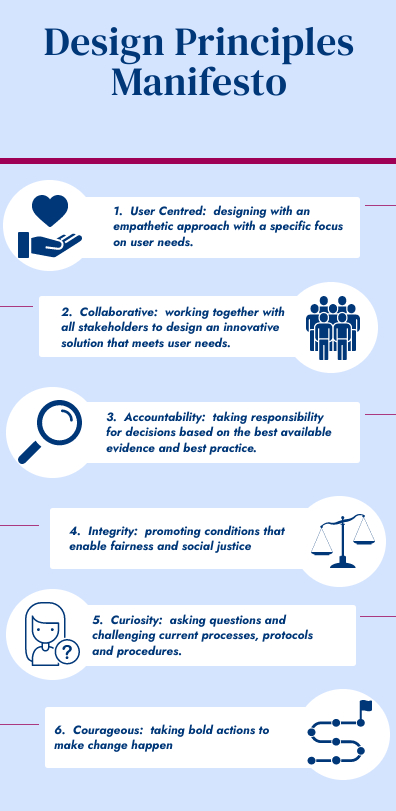We were asked by another organisation for assistance with the training component for an innovative pilot project they were spearheading. The goal of the pilot project was to have people with no dental background be trained to deliver a non-restrictive service to children. The organisation was looking at a new way of providing a service to those in high need yet restricted by access and other barriers. We liked the outside of the box thinking and how the organisation was re-framing this issue as a creative opportunity (Conway et al., 2017, p. 6). Many of the initial meetings with the organisation were information gathering sessions which led to the development of the goals and objectives of the project. It was at this point that the organisation recognised that this was a much larger project than they had anticipated and decided to consult with a project manager for support. Unfortunately, this project did not complete as planned for a variety of reasons.
In retrospect, this project was faced with many challenges which I believe could have been avoided if a project manager had been tasked with leading this project. One of the biggest challenges was lack of leadership to drive the project forward. As Watt (2014) states, “leadership is the ability to motivate and inspire individuals to work toward expected results” (p. 21) and although a project manager was later brought on to help create the plan, the project manager was far too busy with other projects to commit to this project. So, ultimately there was no one who was willing to lead this innovative project to completion which led to the stakeholders not receiving the benefits they were supposed to.
Many of the details surrounding the project were also a challenge because they were not defined. For example, determining the policy around forms and documentation of the delivery of services, selecting the criteria for sites to be part of the project, selecting the training format (in person or online) and deciding what data to collect to evaluate the success of the program. Also, the organisation was working with a five month timeline to implement the project, which also posed a challenge, as it did not leave much time for planning while ensuring realistic timelines were set for the completion of activities. Watt (2014) states “project management is a process that includes planning, putting the project plan into action, and measuring progress and performance” (p. 14). Although this was an innovated project, many of the elements needed for the successful completion of a project were lacking as the organisation had not fully understood the scope of the project.
Lastly, I realised that the organisation lacked the understanding about the implementation of this type of program because they did not have a subject matter expert to answer their questions. I believe that this project required not only project management but also needed to infuse some design thinking into the process because of the proposed new way to deliver the service. Ben Mahmoud-Jouini et al. (2016) state that design thinking can contribute to managing challenges encountered in project management in terms of the exploration (p. 152). If the organisation had not had such a tight timeline, more time could have been taken for exploration to answer questions around the details/processes and to come up with possible solutions for this innovative project. For example, through the design thinking process the organisation would have been able to come up with possible solutions for the documentation of services, referrals process and gathering of data.
In closing, I see the value of project management as I have seen many projects go sideways for various reasons but acknowledge that it may not be suited in all contexts, specifically those with uncertainty and complexity. There is value to having aspects of design thinking integrated into the process especially in healthcare when looking at innovative ways to deliver care. “Design thinking is a problem ‘defining and solving’ approach that deals with ill-structured situations where the problem is not articulated and is considered a hypothesis…” (Ben Mahmoud-Jouini et al., 2016, p. 150).
References
Ben Mahmoud‐Jouini, S., Midler, C., & Silberzahn, P. (2016). Contributions of design thinking to project management in an innovation context. Project management journal, 47(2), 144-156.
Conway, R., Masters, J., & Thorold, J. (2017). From design thinking to systems change. How to invest in innovation for social impact. RSA Action and Research Centre.
Watt, A. (2014). Project Management. Victoria, BC: BCcampus.






